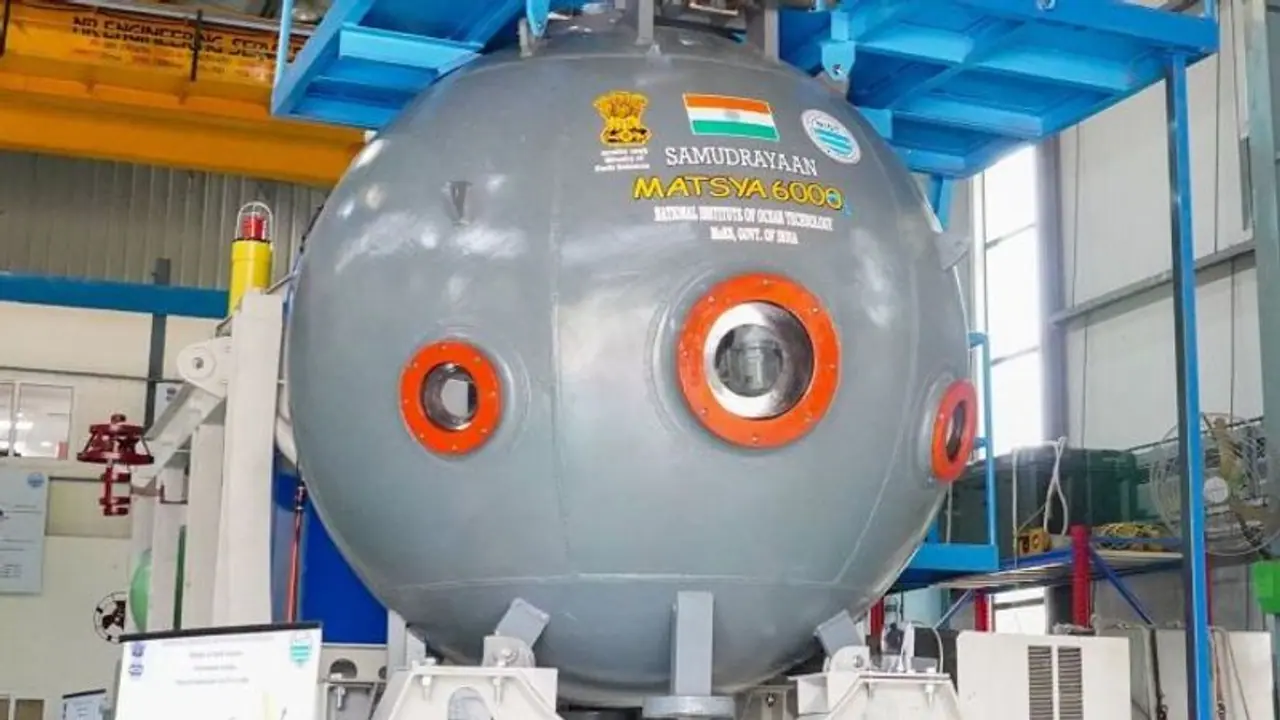The submersible's descent will be a meticulously planned journey, offering explorers a unique perspective of the ocean floor. As India seeks to fulfil its energy needs and explore ocean resources, the MATSYA-6000 mission signifies a significant step in resource exploration and marine research. Girish Linganna explains
India's homegrown submersible, MATSYA-6000, will descend into the depths of the Indian Ocean, carrying a crew of three individuals, reaching a depth of 6,000 meters. India's approach is practical, driven by the desire to unlock the possibilities of the ocean floor for valuable minerals and to study the diverse marine life. India is focusing on areas of economic interest that do not exceed a depth of 6,000 meters.

Space flights involve astronauts sitting in a noisy, metal spacecraft that goes up into space using powerful rocket engines, reaching speeds of up to 40,000 kmph to escape Earth's gravitational pull.
Going underwater in the submersible will be like taking a relaxed journey. The submersible uses special tanks to pull in seawater, making it heavier and slowly sinking into the ocean. It also has tanks that help control its movements for precise navigation.
According to a scientist overseeing parts of Samudrayaan, except for the roughness caused by waves on the surface, the trip downward should be quite calm. Three explorers, inside a round titanium cabin, will go on several journeys, each lasting around 12 hours. They'll be about 1,500 km away from Kanyakumari.
The descent and ascent will each take eight hours, leaving four hours for exploration, surveying, and scientific work.
The interior might get chilly, but normal warm clothing will be enough. You can have meals while going down and coming back up. However, since you'll be in a 2.1-meter sphere with two other people (totally 3), it might feel a bit tight and confined.
When you are 6,000 meters deep, the water's weight above is about 600 times heavier than at the surface. This is why the strong, pressurized hull of the submersible is incredibly crucial.
Currently, National Institute of Ocean Technology (NIOT) has created various steel hull prototypes where people can enter one by one to test the required equipment for controlling the vehicle. However, steel is heavy and can corrode in the ocean, so it's not ideal for long-term research. That's why submersibles around the world typically use a material called titanium alloy, which is a better choice.
But in India, there were no companies that could make a titanium hull like this. That is until NIOT got help from ISRO. To make the submersible's outer shell, they need to join two halves of strong titanium material. This shell is the only thing keeping the people inside safe from the intense water pressure. But it has to have thickness not more than 80 millimeters, so the submersible stays light and has enough room for the crew.
NIOT plans to do a test dive of 500 meters in the titanium sphere this year, and they'll do some more dives at even greater depths before the main mission.
The scientist involved mentioned that roughly 60% of the submersible was made in India. This includes things like the outer structure, ballasts ( is heavy material that is used to provide stability to a vehicle or structure), and the strong casing that keeps the pressure out. However, some parts like cameras, sensors, and communication systems were purchased from companies outside India. He also noted that the software used to control the submersible's position and movements is being developed by NIOT themselves.
Over time, NIOT has worked closely with experts from crewed-submersible teams in different countries like Japan, Russia, and France. They have gathered the knowledge needed to make sure going down and coming back up safely is possible.
The entire journey of MATSYA will be recorded by 12 cameras placed around the submersible to capture a complete view of the descent. The crew will also have the ability to film what's around them through glass windows.
The Matsya chambers have oxygen and, if there's an emergency, there's enough air for the crew for 96 hours. There's a system that can lift the 25-tonne MATSYA out in case of an emergency.
Unlike space flights, where there's a constant risk of explosion due to highly flammable fuel, MATSYA relies only on gravity, water, and lithium-ion batteries for power.
Due to the great depth and water's resistance to signals, the communication system between the launch ship and the submersible will be quite basic. For example, live-streaming won't work because there's a 20-second delay to send messages from the seabed to the surface.
India is looking to fulfill its energy requirements and tap into ocean resources. The International Seabed Authority has set aside a large area in the Central Indian Ocean Basin for mining exploration, covering about 75,000 square kilometres. In this area, the goal is to search for polymetallic nodules resting on the seafloor. Initial estimates suggest there are around 380 million tonnes of these nodules, containing valuable metals like copper, nickel, cobalt, and manganese.
Polymetallic nodules are small, round lumps found on the ocean floor that contain a mixture of valuable metals like copper, nickel, cobalt, and manganese.
